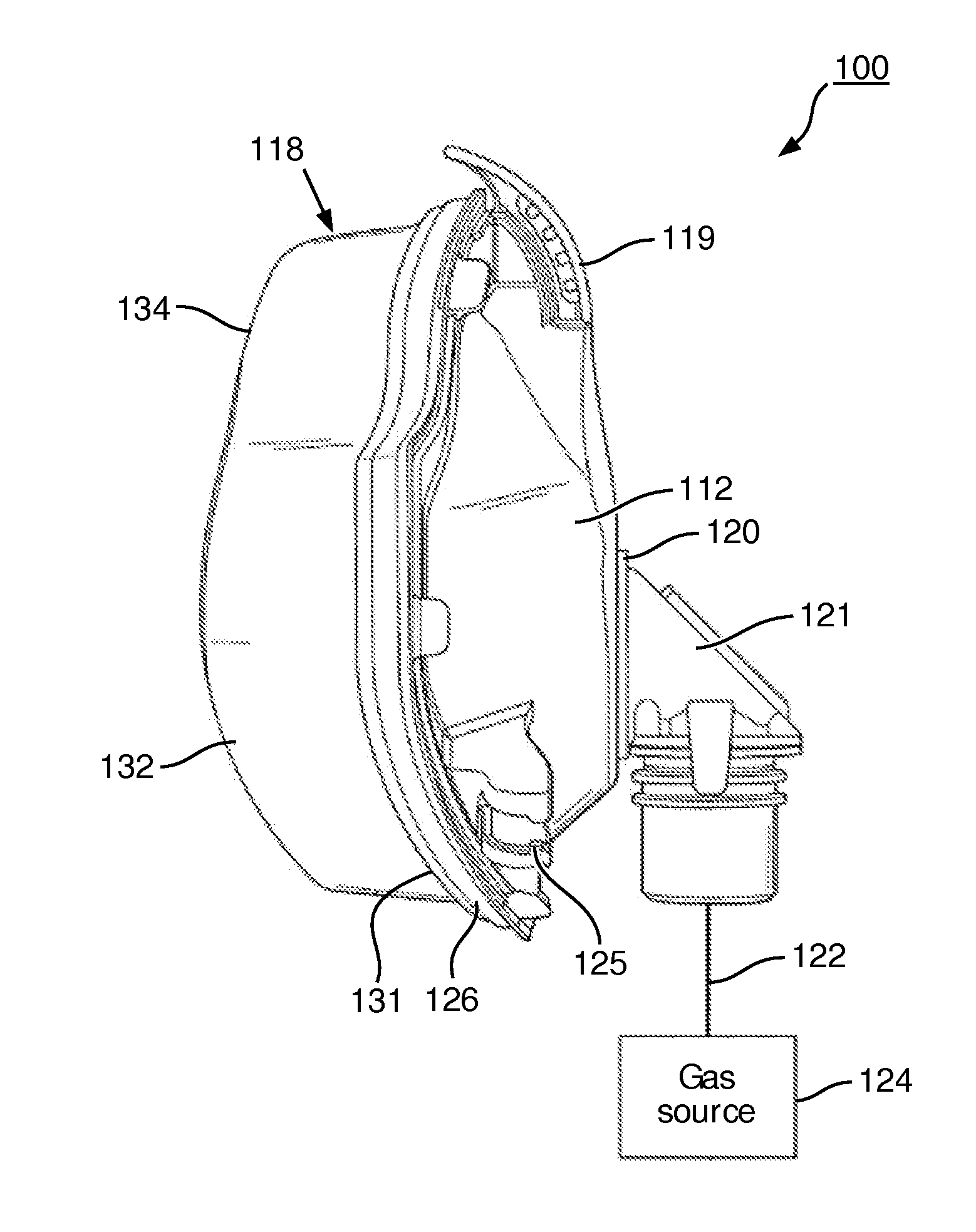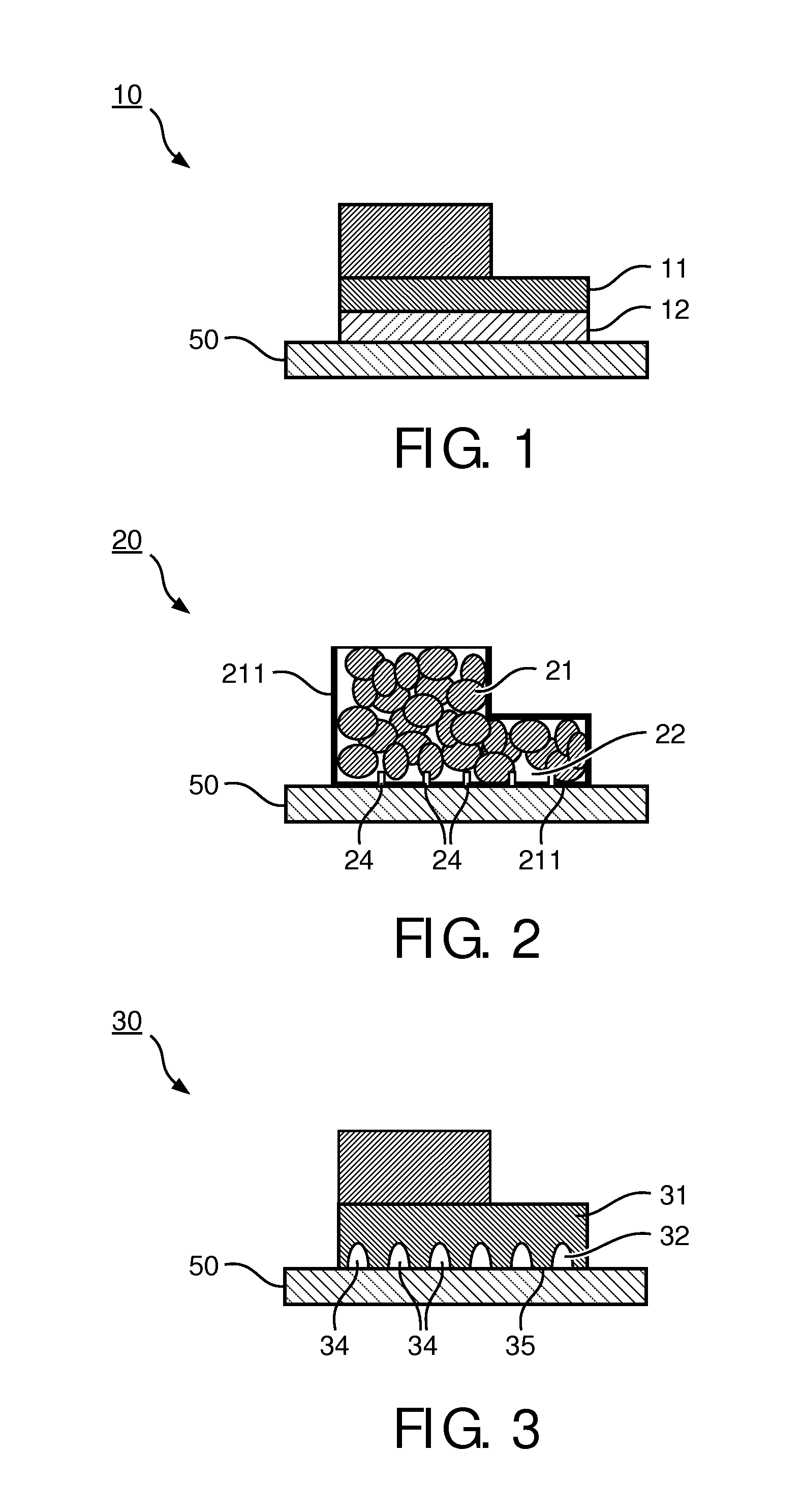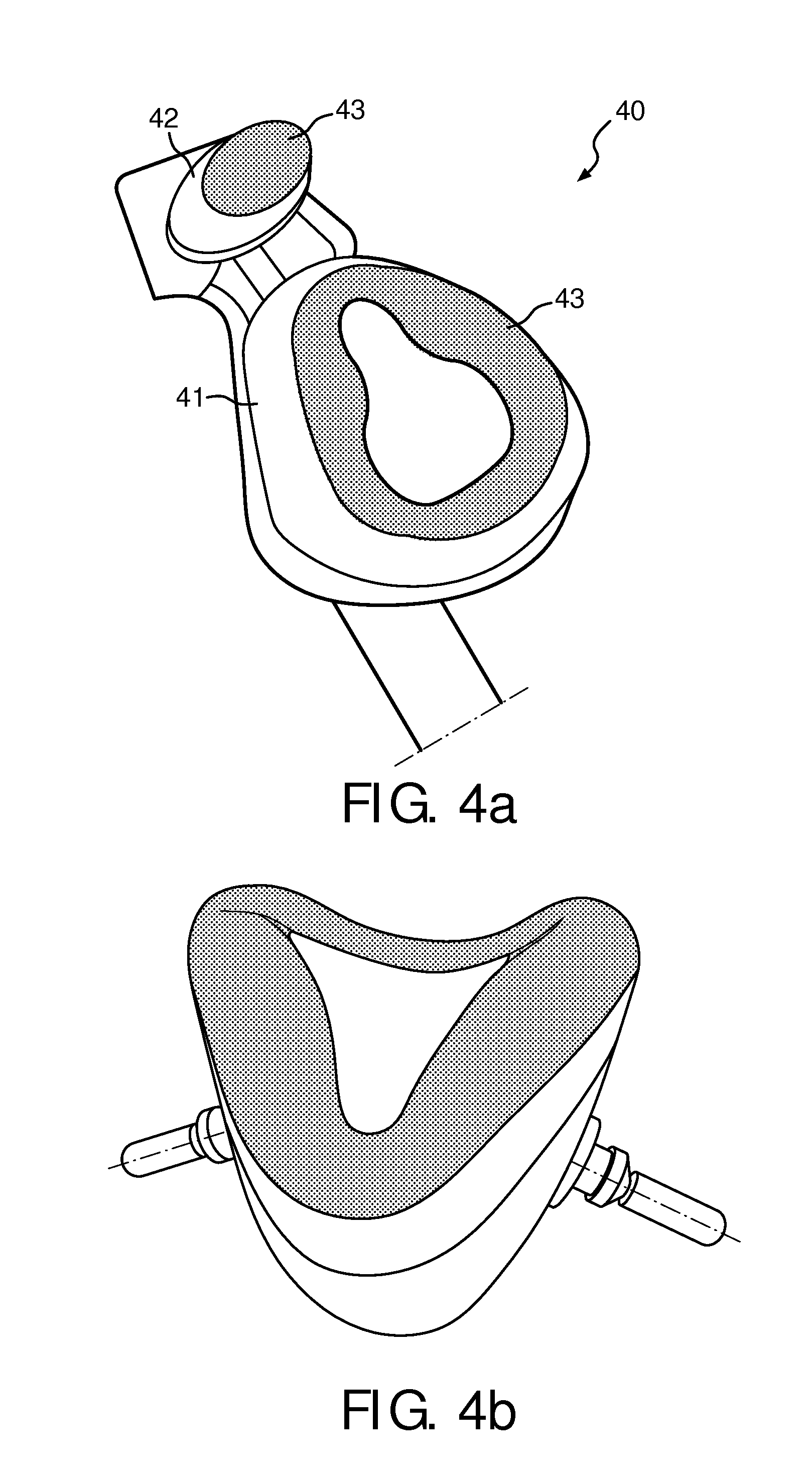Skin-contact product having moisture and microclimate control
- Summary
- Abstract
- Description
- Claims
- Application Information
AI Technical Summary
Benefits of technology
Problems solved by technology
Method used
Image
Examples
example 1
[0218]The commercial silicone elastomer Elastosil LR 3004 / 40 (Wacker Silicones, Germany) was used as silicone precursor material. The silicone precursor material is a two component system that has to be mixed in a 1:1 ratio of the two components A and B. The A component consists of a pre-polymer bearing reactive vinyl groups and a platinum catalyst. The B component consists of a pre-polymer bearing reactive vinyl groups and a pre-polymer bearing Si—H groups. The silicone composition was comprised of 90% of the commercial silicone precursor and 10% of a commercial sodium alpha-olefin sulfonate.
[0219]The commercial sodium alpha-olefin sulfonate was first mixed with the A component of the silicone precursor material. This mixing process is generally energy-demanding as the two components are viscous and do not mix well. An example of the energy / shear that is needed is given in the international patent application WO2010 / 095105, where the incorporation of the surfactant in Elastosil LR3...
example 2
[0226]The commercial silicone elastomer Elastosil LR 3004 / 40 (Wacker Silicones, Germany) was used as silicone precursor material. The silicone precursor material is a two component system that was mixed in a 1:1 weight ratio of two components A and B. The A component consists of a silicone pre-polymer bearing reactive vinyl groups and a platinum catalyst. The B component consists of a silicone pre-polymer bearing reactive vinyl groups and a pre-polymer bearing Si—H groups.
[0227]The sodium alpha-olefin sulfonate RCH═CH(CH2)nSO3Na (n=12-14) commercially available from The Chemistry Store.com (Cayce, S.C., United States) with an average particle size above 400 μm was first mixed with the A component of the silicone precursor material. This mixing process is generally energy-demanding as the two components are viscous and do not mix well. Heating to 120° C. may therefore be needed.
[0228]To facilitate mixing of the commercial sodium alpha-olefin sulfonate with the silicone precursor A co...
example 3
[0231]In a further example the commercial silicone elastomer Elastosil LR 3004 / 40 (Wacker Silicones, Germany) was used as silicone precursor material. The silicone precursor material is a two component system that was mixed in a 1:1 weight ratio of two components A and B. The A component consists of a silicone pre-polymer bearing reactive vinyl groups and a platinum catalyst. The B component consists of a silicone pre-polymer bearing reactive vinyl groups and a pre-polymer bearing Si—H groups.
[0232]A commercial sodium alpha-olefin sulfonate RCH═CH(CH2)nSO3Na (n=12-14) from Stepan Company was used. This very fine powder with particle sizes <400 um was mixed with the A component of the silicone precursor material by speed mixing. More specifically, commercial sodium alpha-olefin sulfonate (12 g) was mixed with silicone precursor A component (19 g). Then silicone precursor B component (26.1 g) was added and the obtained composition was mixed. The resulting silicone composition was thus...
PUM
| Property | Measurement | Unit |
|---|---|---|
| Time | aaaaa | aaaaa |
| Percent by mass | aaaaa | aaaaa |
| Percent by mass | aaaaa | aaaaa |
Abstract
Description
Claims
Application Information
 Login to View More
Login to View More - R&D
- Intellectual Property
- Life Sciences
- Materials
- Tech Scout
- Unparalleled Data Quality
- Higher Quality Content
- 60% Fewer Hallucinations
Browse by: Latest US Patents, China's latest patents, Technical Efficacy Thesaurus, Application Domain, Technology Topic, Popular Technical Reports.
© 2025 PatSnap. All rights reserved.Legal|Privacy policy|Modern Slavery Act Transparency Statement|Sitemap|About US| Contact US: help@patsnap.com



